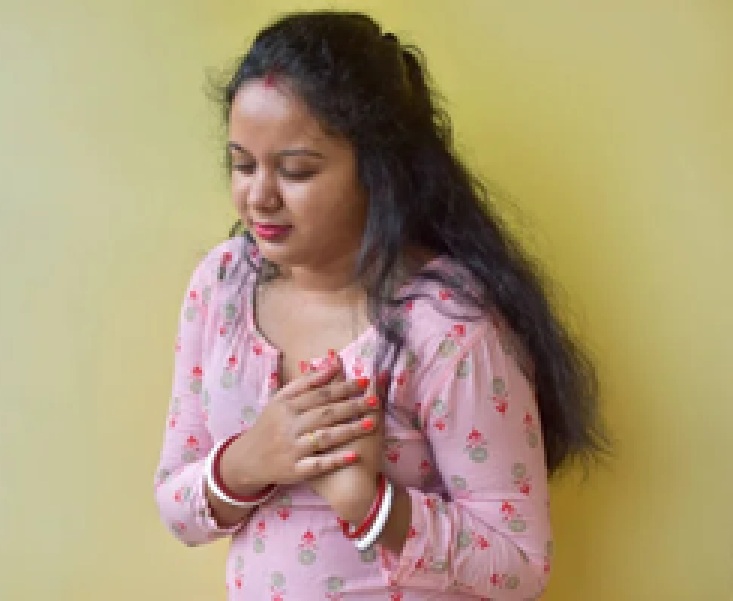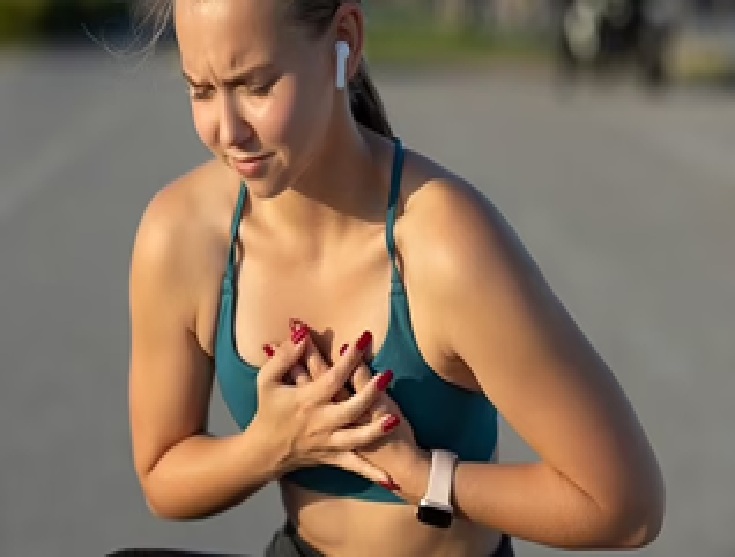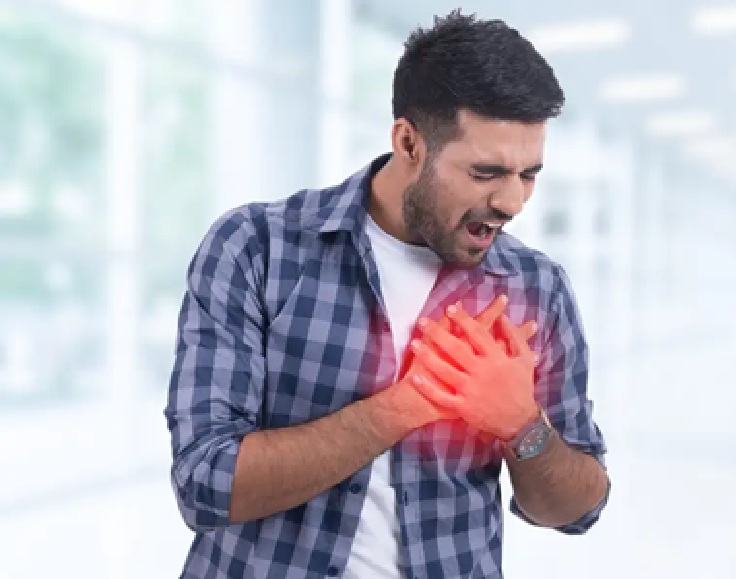Are You

Heart Attack Symptoms in Women vs Men in India 2025 :- Heart disease doesn’t discriminate but how it shows up can differ drastically between men and women. Especially in India, where awareness is still catching up, many lives are lost not because help wasn’t available, but because the warning signs weren’t recognized in time. In 2025, with India’s healthcare system evolving, it’s time to address these differences head-on.

Why This Topic Matters in 2025
Heart disease is the leading cause of death in India. Yet, the average Indian still believes that heart attacks primarily affect men. This outdated belief is deadly, especially for women, whose symptoms often go unnoticed or misdiagnosed.
Rising Cases of Heart Disease in India
With rising stress levels, poor lifestyle choices, and genetic predisposition, India has seen a surge in heart-related issues. Alarming numbers are now being reported among younger people and women, which was rare two decades ago.
Understanding Heart Attacks
What Is a Heart Attack?
A heart attack occurs when blood flow to a part of the heart is blocked, usually by a blood clot. This prevents oxygen from reaching that part of the heart muscle, causing it to die if not treated quickly.
Causes of Heart Attacks
- Plaque buildup (atherosclerosis)
- Blood clots
- High blood pressure
- Stress
- Diabetes
How Heart Attacks Manifest in the Body
It’s not always the dramatic clutching-the-chest scene we see in movies. The symptoms can range from subtle discomfort to intense pain. And that’s where the gender divide begins.
Gender Differences in Heart Attacks
Biological Differences Between Men and Women
Men and women have different heart sizes, blood vessels, and hormonal profiles. This directly influences how symptoms show up and how damage is done during a heart attack.
Role of Hormones Like Estrogen
Estrogen offers some protection to pre-menopausal women, but after menopause, the risk of heart disease spikes. This hormonal shift often masks typical symptoms.
Social and Behavioral Factors in India
Women in India often prioritize family over their health, delay doctor visits, and underreport symptoms. Men, on the other hand, are more likely to seek medical help immediately.
Common Heart Attack Symptoms in Men

Chest Pain and Pressure
The classic sign: intense pain or tightness in the center or left side of the chest.
Upper Body Pain
Pain radiating to the shoulders, arms (usually left), neck, or jaw.
Shortness of Breath
This can occur before or during chest discomfort, especially during physical activity.
Cold Sweats and Nausea
Sudden sweating, along with feeling sick or lightheaded, is common in men.
Common Heart Attack Symptoms in Women
Unusual Fatigue
Women often experience unexplained tiredness, sometimes days or even weeks before the attack.
Indigestion or Heartburn
Rather than chest pain, many women report stomach discomfort, mistaken for acidity or gas.
Dizziness or Lightheadedness
Feeling faint or weak without obvious cause is another red flag.
Pain in Jaw, Neck, or Back
Unlike men, women might not feel chest pain but instead have discomfort in areas like the neck or upper back.
Misdiagnosis and Delay in Treatment
How Women’s Symptoms Are Often Overlooked
Due to vague and atypical symptoms, doctors may misattribute them to anxiety, menopause, or gastric issues—costing valuable time.
Impact of Stereotypes in Indian Healthcare
Cultural norms often paint heart attacks as a “man’s disease,” leading to fatal delays in diagnosis and treatment for women.
Case Examples from Indian Hospitals
A 45-year-old woman in Delhi reported fatigue and jaw pain. She was told to rest. Hours later, she collapsed due to a full-blown heart attack.
Heart Attack Statistics in India (2025)
Latest Trends and Data
- 1 in 4 deaths in India is due to heart disease.
- 30% increase in female heart attacks in urban India since 2020.
- Women have a 20% higher chance of dying from a heart attack compared to men.
Comparison of Male vs Female Mortality
Despite lower incidence rates, women have poorer outcomes due to delays and misdiagnosis.
Diagnostic Challenges in Women
Limitations of Traditional Testing
Standard tests like ECG and treadmill tests may not detect certain types of heart disease common in women, like microvascular disease.
The Role of Newer Diagnostic Tools
Advanced imaging like cardiac MRI and CT angiograms offer better detection and are becoming more accessible in urban India.
Lifestyle and Risk Factors in Indian Men and Women
Diet, Stress, and Sedentary Lifestyle
High-carb diets, lack of exercise, and growing mental health issues are shared risk factors.
Smoking and Alcohol Consumption
While more common in men, female smoking and alcohol use are rising in urban India—along with heart disease risks.
Diabetes and Hypertension Trends in India
India is the diabetes capital of the world. Both men and women are vulnerable, especially with poor screening rates.
Prevention and Awareness
Importance of Public Awareness Campaigns
Awareness campaigns targeting both genders equally can save thousands of lives.
Role of Family and Community in Early Detection
Spouses, children, and peers play a vital role in noticing unusual symptoms and encouraging timely care.
Role of Technology and AI in 2025
Wearables and Smart Monitoring
Smartwatches and fitness trackers can now alert users to irregular heart rhythms, aiding early detection.
AI-Based Diagnosis and Early Detection
AI tools in hospitals help flag atypical presentations, especially helpful for diagnosing women’s symptoms more accurately.
Importance of Gender-Specific Research
Medical Research Gaps in India
Most clinical trials still underrepresent women, making treatment protocols less effective for them.
Call for More Inclusive Studies
We need more India-specific data that includes rural and urban women to drive better outcomes.
When to See a Doctor
Red Flags You Shouldn’t Ignore
- Extreme fatigue
- Chest discomfort
- Dizziness
- Pain in back, neck, or jaw
What to Expect in Emergency Care
Quick ECG, blood tests, and possibly angiography. Speed is everything—every minute counts.
Real Stories from Survivors in India
A Woman’s Story of Missed Diagnosis
Rekha, 52, ignored her symptoms thinking it was gas. A week later, she had a massive attack. Today, she advocates for women’s heart health in Pune.
A Man’s Experience with Classic Symptoms
Rajeev, 48, rushed to the ER when he had chest pain. Timely angioplasty saved his life. He now educates others through online videos.
Conclusion
Understanding heart attack symptoms isn’t just for doctors—it’s something every Indian must know, especially in 2025. The symptoms in women often differ from men, and ignoring them can be deadly. Awareness, timely action, and updated diagnostics are the need of the hour. Let’s break the myth that heart attacks are a “man’s issue” and start protecting all hearts equally.
FAQs
Q1: Why do women have different heart attack symptoms than men?
Women often have smaller arteries and different hormonal influences that cause subtler symptoms like fatigue, back pain, and nausea instead of chest pain.
Q2: At what age should Indians start getting screened for heart disease?
Ideally from age 30 onwards, especially if there’s a family history of heart issues, diabetes, or high blood pressure.
Q3: Can young women in their 30s have heart attacks?
Yes. Rising stress, lifestyle changes, and genetic factors make younger women increasingly vulnerable.
Q4: Are smartwatches reliable for heart attack detection?
They’re great for tracking irregular heartbeats and oxygen levels but should never replace medical diagnosis.
Q5: What’s the most important first step during a heart attack?
Call emergency services immediately. Don’t drive yourself. Every second saved can save heart muscle—and a life.

Wow